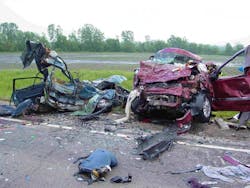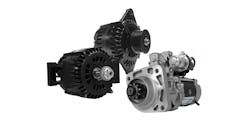A preliminary estimate of motor vehicle fatalities by the National Safety Council (NSC) – a group that in some ways uses a far tougher set of data parameters when it comes to tallying deaths in motor vehicle crashes – finds that fatalities actually declined 3% last year to about 35,200, with crash injuries requiring medical attention also dropping some 2%in 2013 compared to 2012 to a total of 3.8 million.
On the surface of things, that’s good news, of course. But in reality, it turns out that the numbers for 2013 are 1% higher than 2011 – meaning that the relatively high number of fatalities in 2012 appears to have been a one year bump, mayhap partially due to the milder winter two years back, noted John Ulczycki, NSC’s vice president of strategic initiatives, in a statement.
So at the end of the day, he said that “dip” basically means that the 2013 motor vehicle fatality numbers dropped back down to 2010 and 2011 levels.NSC also stressed its fatality figures are not comparable to National Highway Traffic Safety Administration (NHTSA) numbers because NSC counts both traffic and non-traffic deaths that occur within a year of the accident, whereas NHTSA counts only traffic deaths that occur within 30 days.
Ulczycki also stressed another point in the ongoing highway crash fatality debate: that more than 90% of crashes are due to “human error.” Encompassing everything from distracted driving to impairment via alcohol and drug use.
“Drivers are taking a lot of risks on our roads today – people are speeding, driving impaired from alcohol and drugs, not wearing seat belts, talking on phones, reading or sending email and texts, and parents are letting teens drive before they are ready,” he said.
“We all need to look at the risks we take and the resulting harm that may be caused to ourselves and others,” Ulczycki pointed out. “Many of these 35,200 fatalities last year surely involved people taking risks they thought they could handle. Sadly, they were wrong.”
NSC added that vehicle crashes also present a significant national cost in lost wages and productivity, medical expenses, administrative expenses, employer costs and property damage, with the estimated cost of motor vehicle deaths, injuries, and property damage totaling $267.5 billion in 2013, which is a 3% decrease from 2012.
So what will it truly take to drive motor vehicle-related fatalities, injuries, and costs down significantly in the coming years? That still remains a very tough question to answer it seems.




